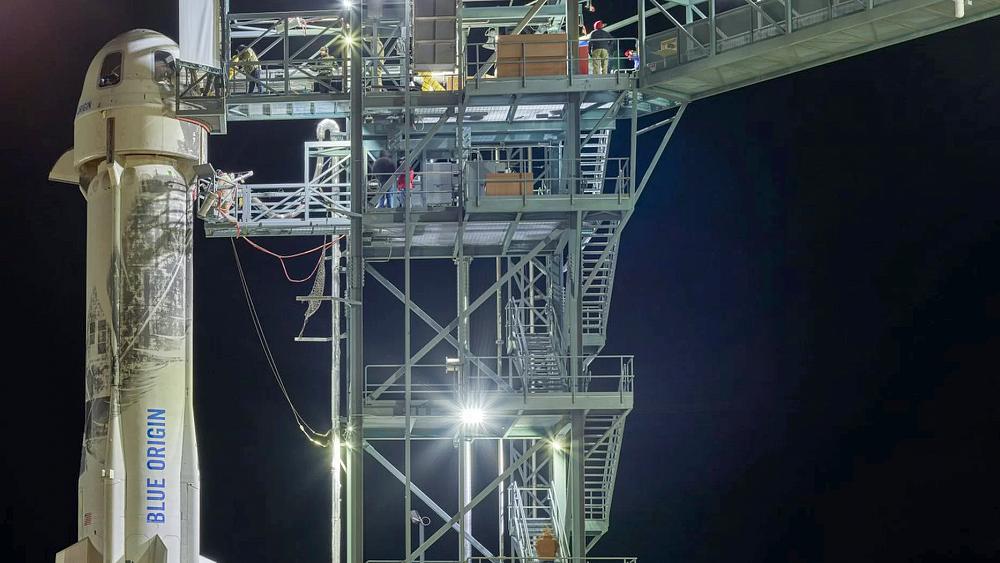Archive for the ‘space travel’ category: Page 382
Jan 26, 2019
SpaceX Just Test Fired the Rocket That’ll Launch Its Crew Dragon
Posted by Genevieve Klien in category: space travel
Jan 26, 2019
Blue Origin breaks ground for BE-4 factory
Posted by Genevieve Klien in category: space travel
WASHINGTON — As Blue Origin breaks ground on a new factory for producing rocket engines, the company says development of its BE-4 engine will be completed later this year.
Blue Origin held a groundbreaking ceremony in Huntsville, Alabama, Jan. 25 to formally mark the start of construction of a factory that will be used for building BE-4 engines. The company announced plans to build the factory there in June 2017, contingent on the selection of the engine by United Launch Alliance for its Vulcan rocket. ULA picked the BE-4 in September 2018.
The factory, scheduled for completion in March 2020, will build dozens of BE-4 engines a year for both Vulcan as well as Blue Origin’s own New Glenn vehicle. Both rockets are scheduled to make first launches in 2021. Vulcan will use two BE-4 engines in its first stage while New Glenn’s reusable first stage will be powered by seven BE-4 engines.
Jan 24, 2019
Blue Origin wants to launch a person into space by the end of this year
Posted by Genevieve Klien in category: space travel
The company owned by Jeff Bezos is also expected to launch tickets sales later this year for space tourism flights.
Jan 24, 2019
NASA: Astronaut immune system cells affected by long-term trips
Posted by Genevieve Klien in categories: biotech/medical, space travel
NK-cell function appears to be impaired during spaceflights over long durations according to a new study published this week. This means that immune systems could be broken down somewhat during the long trips NASA hopes to take with astronauts in the distant future. The research here was done by a team of researchers at the University of Arizona, the University of Houston, Louisiana State University, and NASA-Johnson Space Center.
Jan 23, 2019
Blue Origin Just Landed Its First Rocket of 2019 Ahead of Crewed Flight
Posted by Genevieve Klien in category: space travel
Jan 23, 2019
Trump reportedly offered NASA ‘all the money you could ever need’ to land on Mars during his presidency
Posted by Michael Lance in categories: economics, space travel
Some people on his communications staff at the time were not pleased.
Sims writes that he was “getting antsy” in the room due to Trump’s abrupt question shortly before a televised phone call with the Space Station. NASA officials were believed to have gone to great lengths to coordinate with the Space Station, which could only be reached during a certain time due to “orbital mechanics.”
“All I could think about was that we had to be on camera in three minutes … And yet we’re in here casually chatting about shaving a full decade off NASA’s timetable for sending a manned flight to Mars,” Sims reportedly wrote. “And seemingly out of nowhere.”
Jan 19, 2019
Blue Origin to Launch 10th New Shepard Test Flight Monday
Posted by Alberto Lao in category: space travel
Blue Origin’s New Shepard suborbital spaceflight system will fly again on Monday (Jan. 21), if all goes according to plan.
Blue Origin, which is led by billionaire Amazon.com founder Jeff Bezos, had originally aimed to launch the 10th uncrewed New Shepard test flight in mid-December but was thwarted by an issue with the infrastructure at the company’s West Texas test site. That problem has now been resolved.
New Shepard will now launch Monday at 10 a.m. EST (1500 GMT/9 a.m. CST), Blue Origin representatives said in a statement.
Continue reading “Blue Origin to Launch 10th New Shepard Test Flight Monday” »
Jan 19, 2019
Why it is dangerous to build ever larger big bang machines
Posted by LHC Kritik in categories: alien life, astronomy, cosmology, energy, engineering, ethics, existential risks, general relativity, governance, gravity, innovation, law, nuclear energy, nuclear weapons, particle physics, philosophy, physics, policy, quantum physics, science, scientific freedom, security, singularity, space travel, supercomputing, theory, time travel
CERN has revealed plans for a gigantic successor of the giant atom smasher LHC, the biggest machine ever built. Particle physicists will never stop to ask for ever larger big bang machines. But where are the limits for the ordinary society concerning costs and existential risks?

CERN boffins are already conducting a mega experiment at the LHC, a 27km circular particle collider, at the cost of several billion Euros to study conditions of matter as it existed fractions of a second after the big bang and to find the smallest particle possible – but the question is how could they ever know? Now, they pretend to be a little bit upset because they could not find any particles beyond the standard model, which means something they would not expect. To achieve that, particle physicists would like to build an even larger “Future Circular Collider” (FCC) near Geneva, where CERN enjoys extraterritorial status, with a ring of 100km – for about 24 billion Euros.
Experts point out that this research could be as limitless as the universe itself. The UK’s former Chief Scientific Advisor, Prof Sir David King told BBC: “We have to draw a line somewhere otherwise we end up with a collider that is so large that it goes around the equator. And if it doesn’t end there perhaps there will be a request for one that goes to the Moon and back.”
“There is always going to be more deep physics to be conducted with larger and larger colliders. My question is to what extent will the knowledge that we already have be extended to benefit humanity?”
Continue reading “Why it is dangerous to build ever larger big bang machines” »
Jan 18, 2019
This Photo of Earth and the Moon Was Shot from 71 Million Miles Away
Posted by Alberto Lao in category: space travel
Here’s a new photo that shows Earth and the Moon from a whopping 71 million miles away. It was captured by NASA’s OSIRIS-REx, which is currently on a mission to obtain a sample from a near-Earth asteroid and return it to Earth.
The photo was captured on December 19th, 2018, using the spacecraft’s NavCam 1 camera. Earth and the moon can be seen on the bottom-left side of the photo. The much larger white object in the upper-right side is asteroid Bennu.
Earth is 71 million miles (114M km) away in the photo, while Bennu is just 27 miles (43 km).
Continue reading “This Photo of Earth and the Moon Was Shot from 71 Million Miles Away” »

















